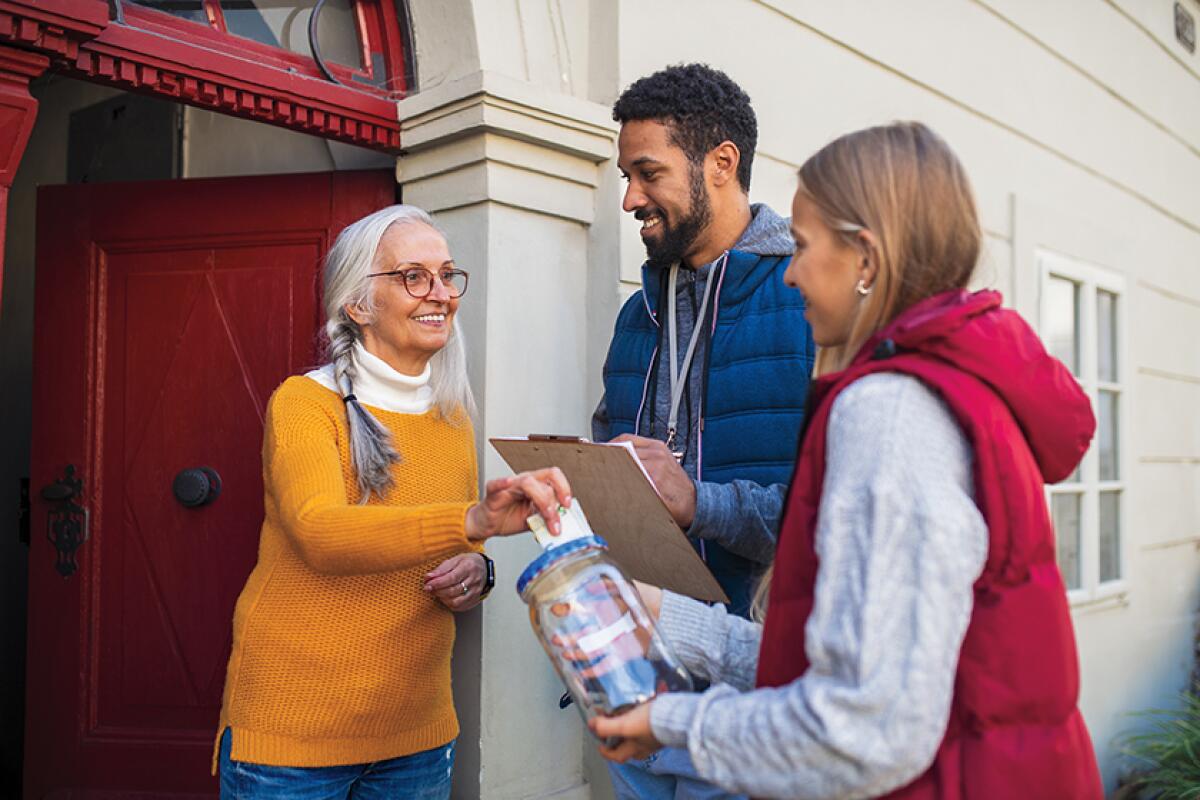The Most Wonderful Time of Year (To Give): SoCal Donations Soar in December

For many of us, the season of goodwill means more than just buying gifts for family and friends. Thirty percent of charitable giving also happens in the month of December, according to matching-gift platform Double the Donation. And we’re giving more and more: overall donations grew by more than 4% over the past year - the 6th consecutive year of growth, despite the COVID-19 pandemic putting millions out of work. Here is a look at why we donate during the holiday season; how much Californians give; and some donation dos and don’ts to keep in mind this year.
California Giving
There are nearly 145,000 nonprofit organizations in California; of those, more than 123,000 are public charities, according to nonprofit coalition Independent Sector. Californians give over $25 billion to charity each year, which represents 2.79% of household income. This equates to an average of around $625 donated annually by each Californian. Nationwide, some 80% of the money that charities receive comes from individual private donors. Such generosity allows charities to deliver vital community services while also giving voice to those they serve. Nonprofits contribute to California communities by providing services including youth clubs and museums, while advancing solutions for societal challenges faced by the state such as food insecurity, homelessness, animal welfare, and environmental protection.
Holiday Generosity
The act of presenting gifts to loved ones during the holidays reminds us of the “warm and fuzzy” feeling we experience from acts of giving. This is not just imagined; science has demonstrated that generosity stimulates “feel-good chemical” dopamine in the human brain. Many people revisit this sensation by also donating to charitable organizations at this time of year.
“Our findings suggest that the reward experienced from helping others may be deeply ingrained in human nature,” concluded research published in the Journal of Personality and Social Psychology. This, in turn, can trigger further generosity, as happier people tend to give more, said a recent Harvard Business School paper.
Some donors seek to rediscover the true meaning of the season of goodwill in the face of rampant consumerism. And many are (at least partially) motivated by the tax benefits of donating to charity, awareness of which tends to accelerate as the end of the tax year approaches. Yet this is actually the least likely reason for people to give, according to a recent survey. Because pure altruism - an unselfish concern for the welfare of others - remains hearteningly commonplace.
For many donors, giving is also highly personal due to a first-hand connection to a given cause. For example, they may have experienced homelessness or suffered from a particular medical condition. People who have personally benefited from the services of a charity, or know someone who has, are also more likely to give.
Donation Dos and Don’ts
If you don’t already have favorite charities, Search for a cause or issue that’s important to you and “charity” will list nonprofits you may wish to support. But before donating, consider the following:
• Private watchdog organizations such as Wise Giving Alliance and CharityWatch have created spending standards for charities and issue reports based on these.
• Volunteering with a local charity can provide first-hand knowledge about a program before donating money.
• Beware of confusion between “tax-exempt” (a charitable organization that is not required to pay taxes) and “tax-deductible” (meaning you can deduct a donation from your taxable income). Donations to tax-exempt organizations are not always tax deductible.
• Watch out for copycat names used by some questionable organizations to resemble those of reputable charities.
• Read the “Guide to Charitable Giving for Donors” provided by California’s Attorney General.
-Paul Rogers